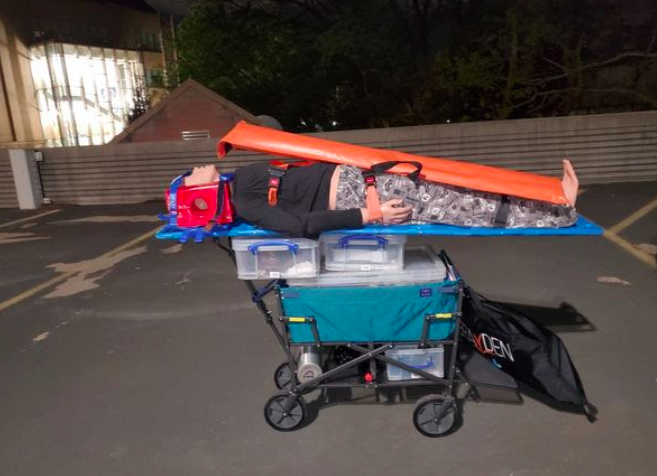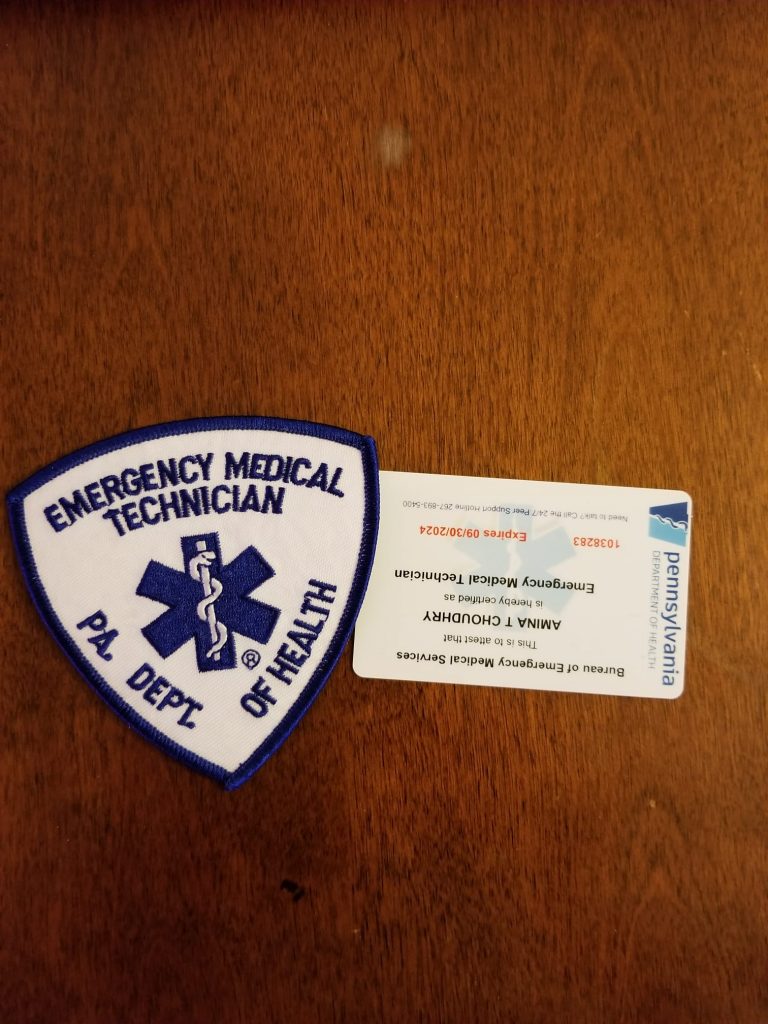Hey Y’all,
Welcome back to Aminas Fli experience, a blog dedicated to detailing the life of a First-Generation Low Income Pre-med student at Bryn Mawr.
In this week’s blog I’m going to break down my experience taking an accredited EMS course and then studying for and going on to pass the NREMT exam.
First, let’s get the terminology out of the way! EMT stands for Emergency Medical Technician. I like to think of there to be 3 levels of emergency care that can be provided to patients.
- First responder
- EMT
- Paramedic
A First Responder is usually a police officer or firefighter. First responders have a rudimentary basis of medical knowledge and paramedics have the most advanced pre-hospital basis of medical knowledge. EMT’s are most common and are essentially the middle-of-the-road emergency medical providers who are trained in various skills and the full operations of an ambulance.
Spring of my Sophomore year, I enrolled in a course at Villanova entitled Twin Valley EMT. This course was a semester-long class that met for 12+ hours every Saturday. The teaching method of the course was “flipped classroom.” Throughout the course of the semester, we learned about the medications, anatomy physiology, epidemiology, infectious diseases, and EMT plan of care, and we did this on our own through a textbook. Then, we would come to class to review the topics and at the end of the class period we would take an exam to ensure mastery of the subject. Throughout the day, we would implement the psychomotor portion of the class. We practiced applying c-collars, long-boarding, CPR, administering medications, taking vital signs, taking a patient history, giving high flow oxygen via a Non-rebreather mask and documenting the History of Present Illness.

Undoubtedly, you will be expected to learn and retain a lot of practical and useful medical knowledge. After all we are being trained as emergency personal working for an ambulance service and responding to all sorts of medical problems. You will be hit with neurological injuries as well as cardiovascular, respiratory, G.I., endocrine systems and so on and so forth. Knowing the basic functioning of these systems will form an indispensable foundation for the rest of your medical knowledge to build off of.
I’m going to be honest, taking a full STEM course-load and an EMT course will require discipline and dedication, but I cannot overstate the benefits of such an opportunity.
Being an EMT volunteer gives you an insight into pre-hospital care that is so invaluable to your future medical occupation. You have the rare and precious chance to perform patient care at the provider level. This means that YOU are the primary person responsible for the patient’s medical care. I know for me that sounded really daunting at first, but you will be trained to handle any scenario and you always have a senior partner riding along that assists every step of the way. All in all being an EMT grants you valuable clinical hours and it’s an extracurricular that will boost your application and provide you with an unmatched level of patient care experience. I don’t know about you guys but when I think of the ‘stereotypical pre-med’, I think of a nose to the books socially awkward control freak. Now I’m not saying I’m an extremely communicative anomaly from the premed cliche, but I definitely do think that through my carefully curated list of activities I’ve managed to develop healthy communication and interpersonal skills.
After all, becoming an effective physician involves more than diagnosing and treating diseases. Medicine by nature is a profession that requires effective communication with patients and coworkers to achieve transformative care, and that’s what being an EMT can provide you. A lot of being an EMT is centered around patient care and history taking.
When someone is in an ambulance they are first and foremost feeling scared and vulnerable. Extracting salient medical information from them while simultaneously digging deep into the vast medical knowledge you’ve generated is a skill that doesn’t hurt to learn early on.
My mentor told me that being an EMT, or any medical personnel for that matter, involves putting on your Sherlock Holmes Hat and really tapping into your keen observation, science, logic, and deduction skills to put the pieces of a puzzle together and solve what sometimes is ‘a medical mystery.’

So… How do I even become an EMT?
Well, first you need to take an accredited course and pass the cognitive practical exams. You can take the same path I did and attend Twin Valley EMT course at Villanova University. Or you can opt to take an EMT course over the summer with a community college. This is the safer bet in my opinion as it allows you the full breadth of summer to consummate the cognitive and psychomotor portions of the class.

A picture of my badge and license
Where can I work as an EMT?
Hooray! You’ve successfully completed the cognitive and psychomotor exams and are officially considered a nationally registered EMT. We don’t want that certification lying around collecting dust so Let’s put it to good use. You can start by reaching out to Narberth ambulance at a local firehouse and express your interest to become a volunteer. If you are a Bryn Mawr student you can also volunteer with Bryn Mawr EMS and run calls with Campus Safety.
The great part about being an EMT is that a lot of medical students even keep up their certification and continue working or volunteering throughout medical school.
Being an EMT isn’t for everyone, but if it sounds interesting to you, I encourage you to research more and reach out to me if you have any questions.
